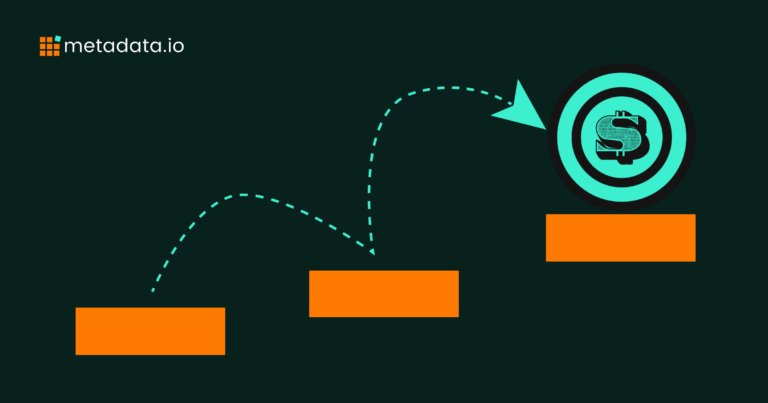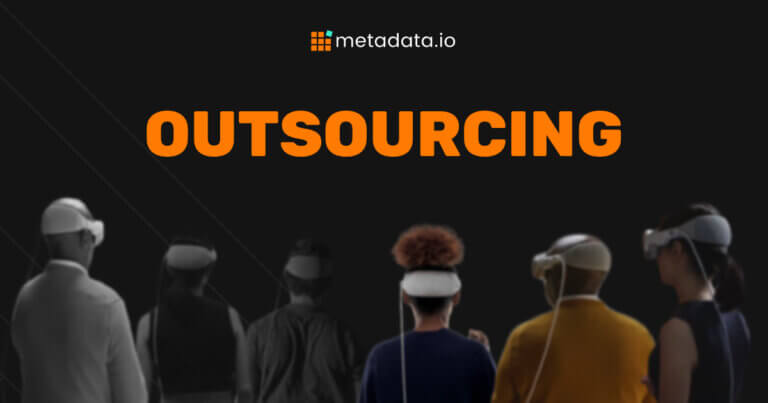The Best B2B Retargeting Strategies for Conversions
B2B sales don’t happen overnight. With long decision-making processes and multiple stakeholders involved, getting a prospect to convert takes time and the right approach. That’s where retargeting comes in.
Instead of letting potential customers slip away after visiting your website or engaging with your content, retargeting helps you stay on their radar with relevant, timely messages. But simply showing the same generic ads over and over won’t cut it. To truly move prospects down the funnel, you need smart, personalized strategies that meet them where they are in their buying journey.
In this guide, we’ll break down the best B2B retargeting strategies to help you reconnect with high-intent prospects, build trust, and ultimately drive more conversions.
How Do B2B Retargeting Strategies Work?
B2B retargeting strategies focus on reconnecting with leads who’ve interacted with your brand but haven’t yet converted. It’s not just about individuals, it’s about reaching multiple stakeholders within a potential client’s company across channels like Google Ads, LinkedIn, Facebook, X (Twitter), and Instagram.
These strategies track user interactions like website visits, email opens, social media clicks, using cookies or pixels. Then, this data fuels personalized ads that keep you relevant, supporting buyers through their lengthy decision-making steps.
But B2B retargeting isn’t without its challenges. Aiming at multiple decision-makers means you must personalize at scale without losing relevance. Audience segmentation can help address these varied roles and concerns.
An omnichannel strategy can also make a major difference. Engaging prospects on platforms where they’re active reinforces consistent messaging and delivers a unified brand experience.
1. Segment Your Audience for Precision Targeting
Segmentation lets you speak directly to buyers’ unique pain points and behaviors. It works by splitting your audience into precise groups for sending better messages that resonate. These messages can address different roles and needs.
Also, keep in mind what stage of the funnel your prospects are in.
At the top of the funnel, prospects are exploring possible solutions, so segment by industry or company type and share broader educational content. For example, whitepapers or ads titled “5 Ways to Improve [Industry] Processes” help introduce your brand and spark interest.
While in the middle of the funnel, prospects are weighing their options. Here, behavioral data, such as previous content engagement, can guide more focused messaging. Offer engaging webinars or case studies that show how your service tackles key challenges. Phrases like “How [Company] Cut Costs by 20% Using Our Platform” speak directly to mid-funnel prospects.
When at the bottom of the funnel, prospects are nearly ready to buy. Showcase personalized demos or limited-time offers that push them over the line. If you’re dealing with big deals, consider specialized proposals or extended trial periods for high-revenue segments. That final nudge can turn a promising lead into a committed customer.
2. Craft Personalized and Relevant Ads
One of the strongest B2B retargeting strategies is personalized ads. Most buyers research thoroughly before committing, so standing out with ads that address specific challenges can make a real difference.
Dynamic content adapts ad experiences based on real-time data, such a visitor’s past activity or funnel stage. With AI writing tools, you can adapt your ad copy for each audience segment at scale and save time. For example, a returning visitor might see product comparisons or testimonials reinforcing your solution.
Reminders and content suggestions can also keep potential buyers on track. Quick prompts can nudge them toward watching that demo they missed or reading a relevant case study. Consider incorporating video in your strategy to convey your message even more effectively.
3. Use Multi-Channel Retargeting Strategies
It’s risky to rely on just one ad platform. Multi-channel retargeting strategies give you broader exposure and reduce the chances of missing valuable leads.
When you’re using a multi-channel approach to run paid social retargeting campaigns, keep this in mind:
- Consistency matters. Presenting a clear, cohesive message, no matter where someone encounters your ads, builds recognition and trust.
- Platform selection should reflect your audience. For B2B, LinkedIn is often a favorite, while Meta (Facebook/Instagram) can amplify business-focused messages with robust targeting options.
Ultimately, a multi-channel strategy boosts brand recall and keeps you visible as prospects move from initial interest to final decision.
4. Implement Account-Based Retargeting (ABR) in Your B2B Strategies
Similarly to account-based marketing, account-based retargeting (ABR) zeroes in on key decision-makers within specific organizations.
Start by compiling a list of companies that regularly visit your site or content. Prioritize those that show strong signals of interest, like multiple visits to product pages or downloads of in-depth resources.
Then, connect your CRM and marketing automation platform to keep your campaigns running smoothly. By aligning these systems, both your sales and marketing teams have a clear overview of account interactions.
Messaging must be spot-on for your ABR campaign to be successful. Tailored ads, specialized demos, and exclusive invitations that speak directly to each account’s needs drive higher engagement and trust. Simply acknowledging a targeted company by name or referencing relevant industry challenges can capture attention far more effectively than broad, generic ads.
5. Create Dedicated Landing Pages for Retargeted Traffic
Dedicated landing pages for retargeted visitors can drastically improve conversion rates. These pages pick up where your ads left off, addressing the specific questions or pain points that made someone click again.
Visitors returning from retargeting campaigns have higher intent, and landing them on a broad homepage might make them lose interest.
To avoid this, keep your promise from the ad. If the ad mentioned an ebook, the landing page should emphasize that ebook. If it teased a discount, showcase it up front. Headlines should match the ad’s messaging. And the call to action should fit the visitor’s funnel stage.
Keep in mind that slow-loading pages or clunky mobile experiences send prospective customers elsewhere. Compress images, streamline code, and ensure layouts adapt cleanly to different screen sizes to deliver a smooth experience.
6. Leverage Sequential Retargeting to Guide the Buyer’s Journey
Sequential retargeting moves beyond repeating the same ad. Instead, you show a series of ads that progress prospects through different stages of consideration. This approach blends storytelling and education.
When using sequential retargeting, keep these tips in mind:
- Break the repetition: Rotate your ads so potential buyers don’t tune them out. Showing fresh angles and messages keeps people interested.
- Nurture deeper engagement: Early ads can spotlight brand awareness. Later ones tackle objections or highlight social proof, preparing leads to act.
- Include storytelling: Incorporating narratives or real-world examples draws your audience in and makes your solution more memorable.
With this approach, it’s easier to navigate the longer B2B purchasing process and avoid common issues like ad fatigue.
7. Use Time-Based Retargeting Strategies to Nudge Prospects at the Right Time
Timing can make or break a retargeting push. By grouping audiences according to how recently they interacted with your brand, you can match your messages to their evolving interest level.
- Short-Term: Focus on users who clicked a key page or opened an email in the past two weeks. Their interest is fresh. Ads offering a follow-up demo or limited-time discount play well here.
- Mid-Term: Some leads need more time. If someone first engaged 30–90 days ago, emphasize educational content or ROI-driven discussions. This might draw them back in.
- Long-Term: Visitors who explored your site months ago may still convert later. Occasional reminders stating new product features or success stories can rekindle interest.
Analyze engagement metrics and set frequency caps to avoid annoying your audience. Balancing helpful nudges with respectful pacing helps you win them over.
8. Retarget Users Based on Intent Signals
Understanding user intent allows for smarter retargeting strategies that align with where buyers are in their decision process. Intent signals—such as downloadable content views, product page visits, or search queries—indicate how ready a prospect is to act.
To make your retargeting efforts more effective, categorize intent into two key areas: search intent (what users are actively looking for) and on-site behavior (how they interact with your website).
When it comes to search intent, users fall into four categories:
- Informational: They’re researching but not yet ready to buy. Retarget with thought leadership content, whitepapers, or webinars.
- Navigational: They’re looking for specific brands or solutions. Use brand reinforcement ads with social proof or comparisons.
- Transactional: They’re ready to buy. Serve discount offers, free trials, or demo requests to nudge them toward a decision.
- Commercial: They’re evaluating options before making a decision. Target them with case studies, product comparisons, or customer testimonials to influence their choice.
When it comes to on-site behavior, visits to pricing pages, demo sign-ups, or cart abandonments signal strong intent. If users bounce from key pages, address possible objections by:
- Retargeting with case studies or testimonials.
- Offering live chat assistance or personalized follow-ups.
- Providing limited-time incentives or reminders.
9. Use CRM and First-Party Data for Smarter Retargeting Strategies
Your CRM system is a goldmine for retargeting. By storing customer interactions, behaviors, and preferences in one place, it enables you to design highly personalized campaigns that convert.
At the same time, first-party data—collected directly from your website, emails, or app—provides real insights into how customers engage with your brand. Combining CRM insights with first-party data allows you to:
- Segment audiences more effectively (e.g., recent buyers vs. inactive leads).
- Personalize ad messaging based on past interactions (e.g., showing tailored offers to users who downloaded a whitepaper).
- Retarget users across multiple channels (email, display ads, LinkedIn) with a consistent experience.
With privacy regulations tightening and third-party cookies fading, leveraging your own data keeps your retargeting sustainable and delivers a higher ROI. Tools like Metadata Spotlight (which helps refine targeting using behavioral data) can further boost engagement and conversion rates.
10. A/B Test and Optimize Your B2B Retargeting Campaigns
Experiment with different creative elements like headlines, images, CTAs, and even audiences, to pinpoint what sparks action.
Remember to update one piece at a time. Maybe you begin with a fresh headline, then test visuals or CTA wording. This step-by-step approach clarifies which factor drives positive results.
But don’t assume the winning version will stay on top forever. Tastes change, markets shift, and ad fatigue unfolds. Keep testing periodically.
With systematic experimentation, you can refine your approach and support stronger campaign outcomes. And you’ll also keep your brand’s messaging fresh.
Implement Retargeting Strategies and Maximize ROI with Metadata
In B2B marketing, retargeting strategies allow you to re-engage promising leads. By staying visible and personalizing your offers, you keep potential clients moving toward the finish line.
Retargeted visitors are more likely to convert, leading to substantial gains in click-through rates and closed deals. This approach filters out casual browsers and focuses on prospects who’ve already shown genuine interest.
However, successful retargeting depends on precise audience segmentation and optimized ad delivery—and that’s where Metadata comes in. With AI-powered audience targeting, Metadata helps you automatically refine and expand your retargeting lists, so your campaigns reach the right people with the right message.
Book a demo to dive deeper into our platform.


